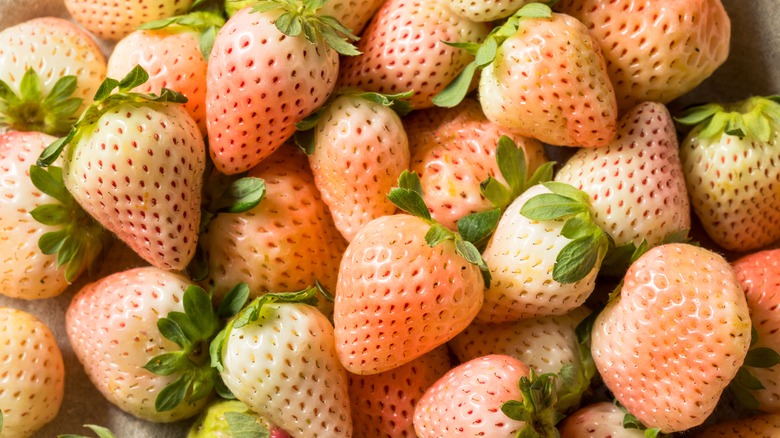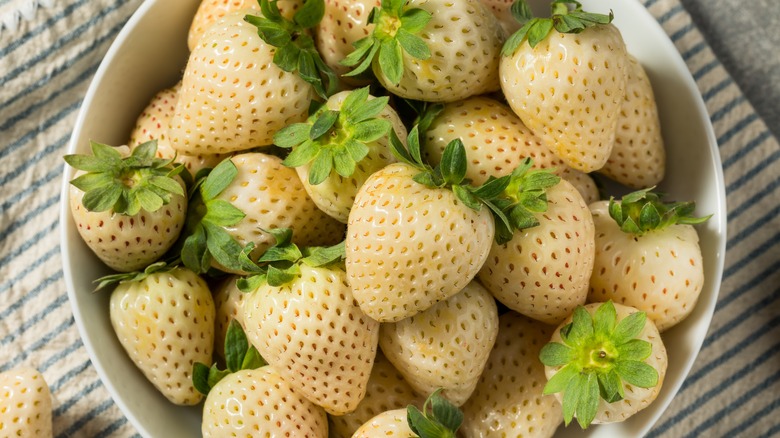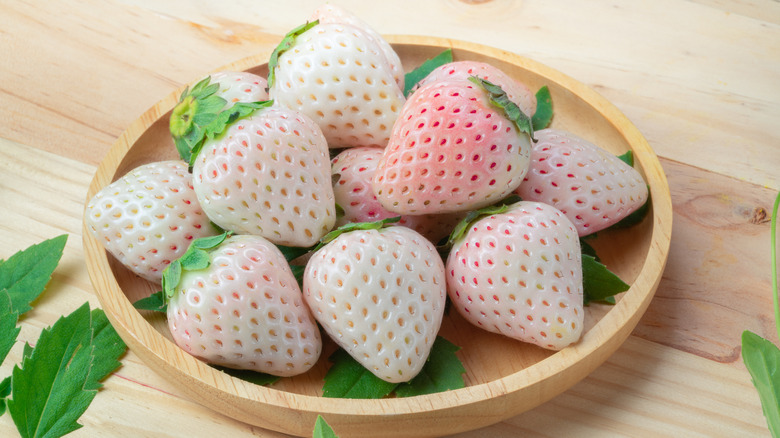Pineberries Vs Strawberries: What's The Difference?
If you've ever been perusing the produce section of your local grocery store and seen cartons of what look like unripe strawberries, you may be mistaken: White strawberries are in fact a real thing, and one variety of these pale fruits are called pineberries. Their distinct white flesh and red seeds are what might make you overlook these berries as underdone strawberries, but don't be fooled — they're every bit as delicious as the red ones, and in a pleasingly different way.
There are obviously many similarities between pineberries and strawberries; they are related after all. However, they do have a different flavor profile: Some people claim that pineberries have a pineapple flavor (hence the name), but to others, they come across closer to the flavor of a pear or apricot. If you're looking for ways to eat more strawberries, consider picking up a carton of pineberries for a milder, less tart alternative.
What is a pineberry?
Pineberries, like all modern strawberries, have their origins in Chile. They were cultivated by the indigenous population of the Andes mountains and ultimately taken by the Spanish back to Spain after their colonization of the region in the 16th and 17th centuries. These Chilean white strawberries are the mother of all modern red strawberries. To get technical about it, neither white nor red strawberries are technically berries, but before botanists could wrap their heads around classifications, people simply called all small fruits "berries" and the name stuck.
Since white strawberries are still native to Chile, all of these "berries" are grown under similar conditions — namely, dry, cool climates with lots of sun. However, pineberries are a specific hybrid of white strawberries that can't be grown from seeds, instead, for those looking to grow them, you must start with a whole plant. When ripe, pineberries will produce a light blush-colored flesh but will remain white on the inside.
Red vs. white berries
Red strawberries can be much larger and more robust than pineberries. Typically, pineberries are uniformly sized and shaped, and their flesh is softer than red strawberries. Red strawberries are typically more tart and less sweet than pineberries, but you can use the two interchangeably in any recipe — although, with the price of white strawberries being significantly higher than the red variety, you may consider combining or just simply enjoying pineberries on their own for their unique flavor and quality.
You can typically find white strawberries (like the pineberry) at the end of winter into early spring. These fruits are grown commercially, so they may be available to you more frequently depending on where you live regionally. Pineberries spoil much faster than red strawberries due to their delicate flesh, so eat them quickly and store them properly for optimal shelf life — don't wash pineberries until you're just about to eat them, and make sure they're refrigerated. Having said that, it's important to note that the flavor of the pineberry can be detected better at room temperature, so you may want to pull a serving from the carton and let it sit briefly on the counter before enjoying.


